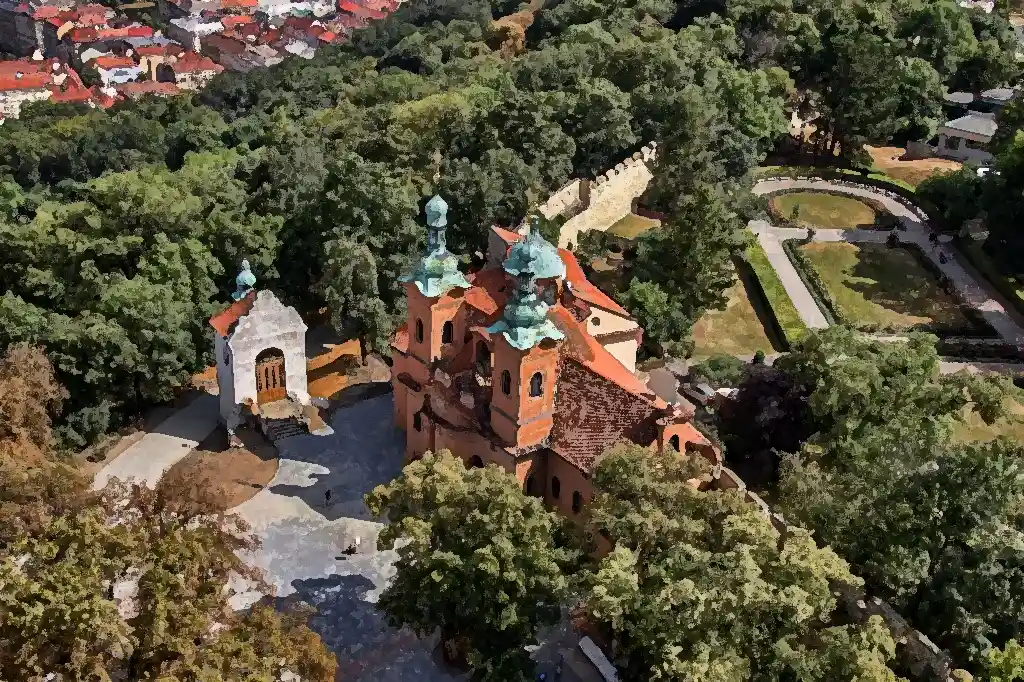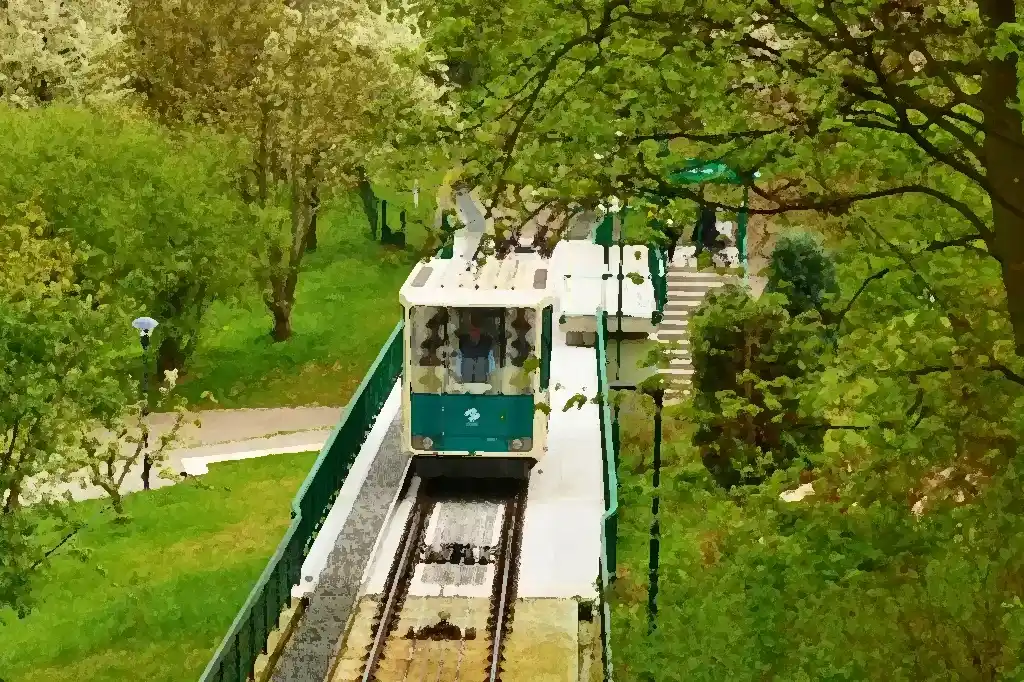A Natural Oasis in the Heart of the City
Rising gracefully on the left bank of the Vltava River, Petřín Hill stands as Prague’s verdant crown—a 327-meter high natural retreat offering respite from the bustling streets below.
This lush prominence, once covered with vineyards planted by King Charles IV, has transformed over centuries into a beloved recreational paradise where locals and visitors alike find solace among rose gardens, orchards, and winding pathways shaded by chestnut trees.
At its summit stands the Petřín Lookout Tower, Prague’s miniature Eiffel Tower, beckoning visitors to climb for what might be the most spectacular view in Central Europe.

Petřín Hill – From Sacred Ground to Public Pleasure Garden
Long before becoming a leisure destination, Petřín held spiritual significance. Its name derives from the Latin “Mons Petri” (Peter’s Hill), referencing St. Peter’s martyrdom by crucifixion. Medieval chronicles mention pagan rituals conducted on the hill before Christianity took hold in Bohemia. By the 12th century, the hill hosted religious processions during Easter and Whitsuntide.
The hill’s transition to public parkland began in the 1800s as the royal vineyards declined and city planners recognized its potential as a green space for Prague’s growing population. The transformation accelerated in 1891 for the Prague Jubilee Exhibition, when the iconic tower was constructed alongside other attractions. Formal gardens, including the spectacular Rose Garden with over 12,000 plants, were established in the early 20th century, cementing Petřín’s status as Prague’s premier park.
Petřín Tower: Prague’s Iron Giant
The Petřín Lookout Tower emerged as part of the patriotic fervor surrounding the 1891 Jubilee Exhibition. Inspired by the Eiffel Tower (built just two years earlier), the Czech Tourist Club funded this 63.5-meter steel skeleton that, despite being only one-fifth the height of its Parisian counterpart, creates a similar dramatic impact due to its hilltop position. When standing at its observation deck, visitors find themselves 378 meters above the Vltava River and Charles Bridge —higher than the actual Eiffel Tower rises above the Seine.
The tower’s construction, using 175 tons of iron, took just five months—a testament to Czech engineering prowess in the late 19th century. It opened on August 20, 1891, instantly becoming a symbol of Czech technical achievement and national pride during a time of heightened cultural awareness within the Austro-Hungarian Empire.
During both World Wars, the tower served as a military observation post. Communist authorities later incorporated it into a television transmission system, adding antennas that remained until the 1990s. After careful restoration in 1991 to mark its centennial, the tower reclaimed its original purpose as Prague’s finest viewpoint.

More Than Just a Tower: Petřín’s Cultural Treasures
While the tower dominates the skyline, Petřín Hill harbors numerous other attractions worth exploring. The Mirror Maze, another relic of the 1891 exhibition, delights visitors with its labyrinth of reflective surfaces and a diorama depicting Prague’s defense against Swedish forces in 1648. Nearby stands the Church of St. Lawrence, a Romanesque structure dating to the 10th century with later baroque modifications.
Buy a Ticket to the Mirror Maze >>
The Observatory, established in 1928, continues the hill’s scientific tradition with regular stargazing events and educational programs. Literary enthusiasts can visit the statue of Karel Hynek Mácha, Czech Romanticism’s foremost poet, whose May love poem inspired a tradition—on May 1, couples place flowers beneath his monument and share a kiss beneath blooming cherry trees.
The Seminary Garden’s extensive orchards preserve historic Czech fruit varieties, while the Rose Garden’s geometric beauty offers fragrant respite during summer months. The tranquil Kinský Garden on the hill’s southern slope houses the charming wooden Church of St. Michael, transported from Carpathian Ruthenia in 1929.
“If Prague is the heart of our nation, then Petřín is surely its soul—a place where the city breathes, dreams, and remembers. From its heights, one sees not just the hundred spires below, but also the endless possibilities that have always defined the Czech spirit.”
Jan Naruda
Access and Activities: Experiencing Petřín Hill Today
Visitors can ascend Petřín by foot along numerous scenic paths, but the most beloved route remains the funicular railway operating since 1891 (with interruptions during wartime and repairs). This historic cable car, part of Prague’s public transportation system, carries passengers from Újezd Street to the summit in just a few minutes.
The tower itself invites exploration via 299 steps winding up its interior. For those preferring a less strenuous ascent, an elevator was added during renovations. Two observation platforms reward climbers—the lower enclosed platform and the upper open-air deck where, on exceptionally clear days, views extend to Sněžka, Czechia’s highest mountain 150 kilometers away.
Petřín offers year-round delights: spring brings blossoming fruit trees and the romantic May celebrations; summer fills the rose garden with color and scent; autumn transforms the slopes into a canvas of red and gold foliage; winter, especially after snowfall, creates a quiet wonderland perfect for sledding.
Couples particularly treasure Petřín—its romantic atmosphere has fostered countless proposals, especially on May 1, the Czech day of love. Families appreciate its spacious meadows ideal for picnics and the playgrounds nestled throughout the gardens. Photographers find endless inspiration in both natural beauty and panoramic city vistas.

A Place of Tradition and Memory
Petřín holds special significance in Czech cultural identity. On Witches’ Night (April 30), bonfires once blazed on its slopes to ward off evil spirits. During the Prague Uprising of 1945, resistance fighters used the tower as an observation post. The hill became a gathering place during the Velvet Revolution, with thousands carrying candles up its slopes in silent protest against communist rule.
Today, annual events including summer cinema screenings, classical music performances among the roses, and harvest celebrations in the orchards continue Petřín’s tradition as a place where Prague’s residents and visitors come together to celebrate culture and nature’s beauty.